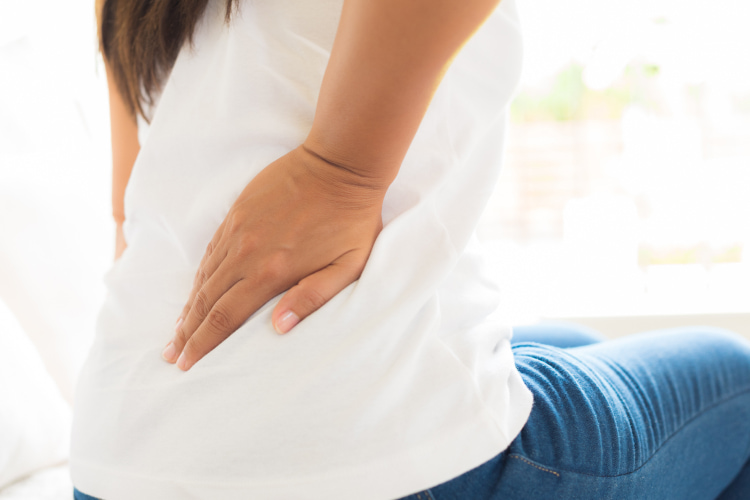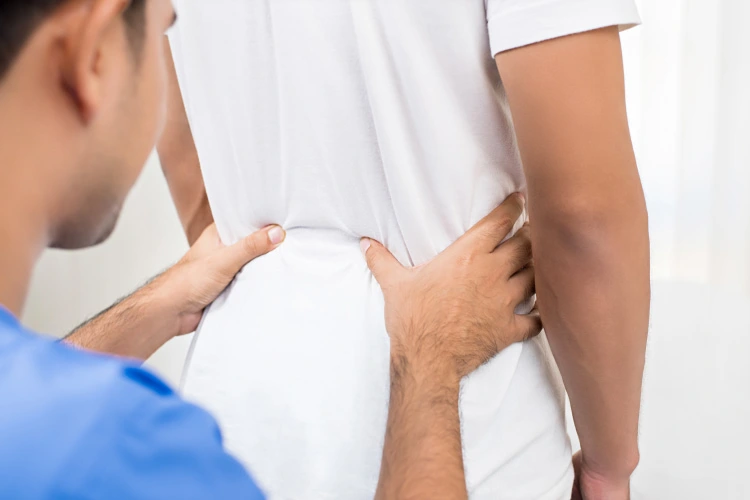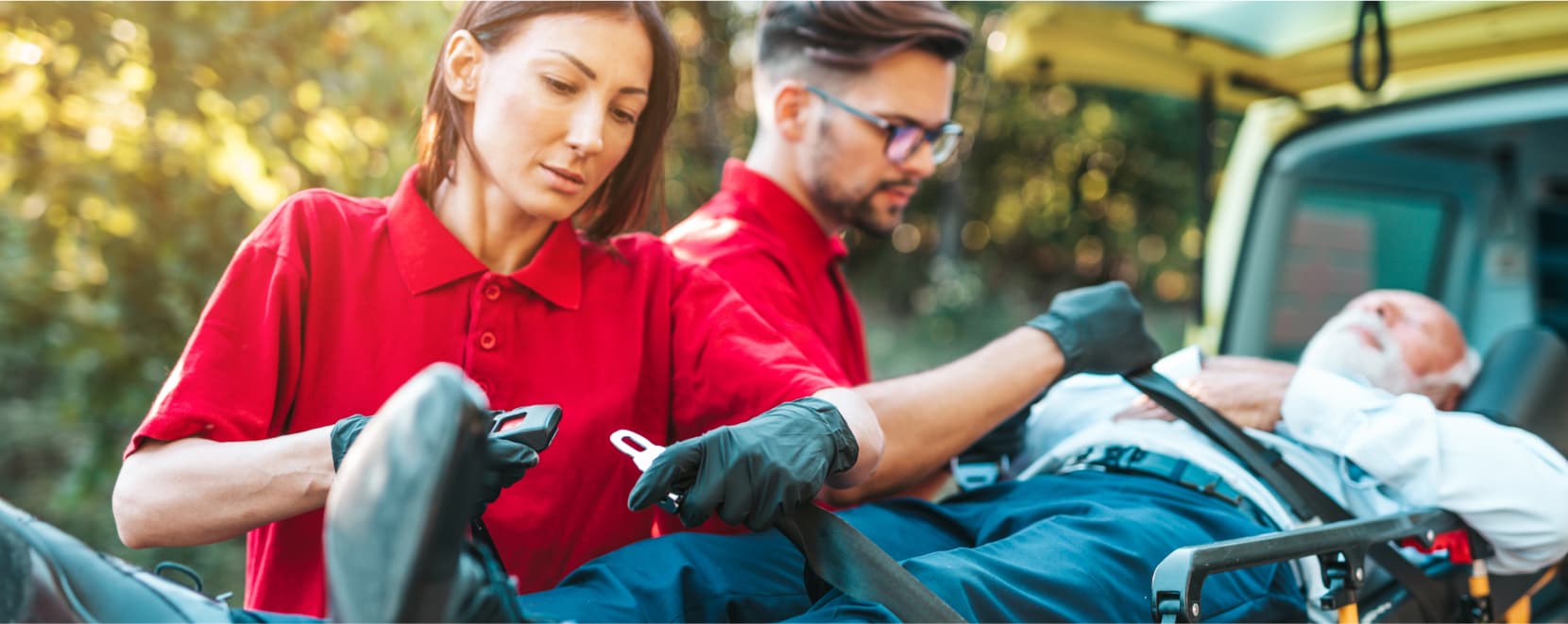Firstly, don’t panic! Lower back pain is a common issue faced by many people who have been in a car accident. It can be a result of various factors. Sudden impact, the force of a collision, and even poor posture during the accident. If you have been in a car accident and are experiencing lower back pain after it, you must take the right steps in order to diagnose and treat the problem properly. Here we will discuss the causes, symptoms, and treatments of lower back pain after car accident. We will also provide you with a guide on knowing if your lower back injury is serious. Then we answer some frequently asked questions regarding lower back pain after a car accident and what to do after reading the article. Whether you are seeking treatment or simply looking for information. Our article will provide you with the necessary knowledge. It is a guide to help you with your recovery journey.
What Causes Lower Back Pain After A Car Accident?
There are various factors:
- Whiplash. A sudden back-and-forth movement of the head and neck. It can cause strain to the muscles and ligaments in the lower back.
- Herniated disk. A force from impact can push a disk out of place, causing lower back pain.
- Fractured vertebrae. A sudden and intense force can cause the vertebrae in the lower back to fracture.
- Soft tissue injury. Muscles, ligaments, and tendons in the lower back can be strained or torn due to the impact of the accident.
- Poor posture. Maintaining poor posture during the accident can also lead to lower back pain.
Spinal cord injury and nerve damage can also be a cause of lower back pain after a car accident. These injuries can result in a range of symptoms. They include loss of sensation or mobility in the legs, muscle weakness, and chronic pain.
A car accident can worsen pre-existing conditions in some cases. These are such as arthritis, degenerative disk disease, or spinal stenosis. That can cause an increase in lower back pain symptoms. So it is vital to seek medical attention to determine the root cause of the pain.
Early diagnosis and treatment can help prevent the development of chronic lower back pain after an accident. It will also improve your chances of full recovery. Next, we will discuss the various symptoms that you should look out for before visiting a doctor.

Lower Back Pain After A Car Accident Symptoms
There are various symptoms that you may experience if you have lower back pain after a car accident:
- Aching or throbbing pain in the lower back.
- Stiffness or reduced range of motion in the lower back.
- Muscle spasms or cramps.
- Numbness or tingling in the legs or feet.
- Weakness in the legs.
Remember! These lower back symptoms may not appear immediately after a car accident. It may take some time for their development. In some cases, you may only experience mild discomfort. But in more severe cases, the pain can be debilitating. It may prevent you from carrying out your daily activities. So symptoms may take several days or even weeks to develop. This is why it’s required to seek medical attention. Even if you don’t experience pain immediately after the accident!
Also, lower back pain after a car accident may not always result from a physical injury. In some cases, it can result from emotional trauma or stress related to the accident. This is known as psychogenic pain and is often accompanied by anxiety or depression.
Do you experience any of these symptoms after a car accident? Then it’s time for you to take advantage of medical attention as soon as possible. A doctor can help you diagnose the cause of your pain. He will recommend the best course of treatment for your individual needs. Early treatment for back pain after a car accident is significant. It can prevent the pain from becoming chronic and more difficult to treat.
It’s also crucial to take care of yourself at home by following a few simple steps. This may include:
- Resting the affected area and avoiding activities that worsen the pain
- Applying cold or heat to the affected area
- Using over-the-counter pain medication
- Staying active and stretching regularly to maintain flexibility
By following these steps and seeking medical attention, you can relieve early symptoms and help ensure that your lower back pain after a car accident is properly diagnosed and treated and that you make a full recovery as quickly as possible.
How to Know if The Lower Back Injury is Serious?
Some red flags that indicate serious lower back pain after a car accident injury include:
- Severe pain that is not relieved with over-the-counter pain medication.
- Loss of bladder or bowel control.
- Numbness or tingling in the genital or anal area.
- Difficulty walking or standing.
- Persistent or worsening pain, even when lying down or resting.
- Swelling, bruising or redness at the site of injury.
- A palpable deformity or bump at the site of injury.
- A fever or chills, which can indicate an infection.
There are also unusual symptoms that may say a more serious underlying condition:
- Dizziness
- Sweating
- Nausea
It is crucial to understand that not all lower back pain after a car accident is serious. And many mild to moderate injuries can be treated with rest. Some of them require physical therapy and over-the-counter pain medication. However, don’t hesitate if you are experiencing any of the red flags or other serious symptoms. It is essential to seek medical attention as soon as possible. A doctor can perform a thorough examination and imaging tests. They will determine the extent of your injury and the best course of treatment.
Early diagnosis and treatment of a lower back injury can help prevent long-term complications. They will allow you to recover more quickly. So if you have been in a car accident and are experiencing lower back pain, it is essential to pay attention to your symptoms and take appropriate action to get the care you need with our help.

Treatments for Back Pain after Car Accidents
Lower back pain after a car accident can be a debilitating experience. It can impact daily life and activities. However, there are several treatment options available for those experiencing back pain:
- Physical therapy. It is one of the most common treatments for lower back pain after a car accident. Physical therapists work with patients to help strengthen the muscles in the lower back. It also improves their flexibility. Physical therapy helps to improve posture and can reduce pain. It is all thanks to targeted exercises and stretches.
- Pain medication. Over-the-counter pain relievers can also be effective in reducing pain and inflammation. Pain medication can provide temporary relief. It is often used in conjunction with other forms of treatment. For example, physical therapy or chiropractic care.
- Chiropractic care. That is another option for treating lower back pain after a car accident. Chiropractors use manual adjustments. They improve alignment and reduce pain in the lower back. They may also use massage therapy and other techniques. It all can help relieve tension and improve circulation in the lower back.
- Massage therapy. This can also reduce tension and improve circulation in the lower back. Massage therapists use a variety of techniques. They include deep tissue massage and trigger point therapy. They help alleviate pain and reduce muscle tightness.
In some cases, surgery may be necessary to repair a herniated disk or fractured vertebrae. Surgery is typically reserved for patients who have not responded to other forms of treatment. Sometimes for those with a more severe injury. Surgery can help to relieve pain and restore mobility. But it is important to understand that recovery can take several months. It also may require physical therapy or other forms of rehabilitation.
It is necessary to seek medical attention immediately after a car accident. Even if you do not think you have sustained a serious injury! Your doctor can perform a thorough examination. It will determine the best course of treatment for your specific situation. Sometimes it requires a combination of treatments for back pain after a car accident. It can address the root cause of lower back pain and provide the most effective relief.
So, many options are available for treating lower back pain after an accident. It can be relieved through physical therapy and pain medication. Moreover, chiropractic care and massage therapy. And less surgery. But in any case, It is vital to work with healthcare professionals. They will find the best solution for your individual situation.
FAQ
What helps lower back pain after a car accident?
Pain relief medications and physical therapy are two common treatments that can help relieve the pain and discomfort associated with lower back pain after a car accident. Additionally, applying heat or ice to the affected area, doing gentle stretching exercises, and making changes to your daily activities or work routine to reduce strain on your back can also help in managing the symptoms.
How long does lower back pain last after a car accident?
The length of time that lower back pain lasts after a car accident can vary widely. It depends on the cause and severity of the injury. As well as the person’s overall health and physical condition. Lower back pain can be managed with proper treatment. It allows people to recover and get back to their normal activities faster.
What are the red flags for low back pain?
Red flags for low back pain include severe pain, numbness or tingling in the legs. Sometimes loss of bladder or bowel control and unexplained weight loss. So it’s not normal to experience any of these symptoms after a car accident. It is worth seeking medical attention as soon as possible.
How do doctors test for lower back pain?
Doctors typically diagnose lower back pain through physical examination. Also, they use medical history reviews and imaging tests. They involve X-rays, MRIs or CT scans. The specific tests depend on the suspected underlying cause of the pain. And also on the doctor’s assessment of the patient’s symptoms and medical history.





IMHO: It’s sooo important to take proper care of our bodies and address any potential injuries.
I appreciate the advice given in this article about seeking medical attention after a car accident, even if the pain is not immediately severe!